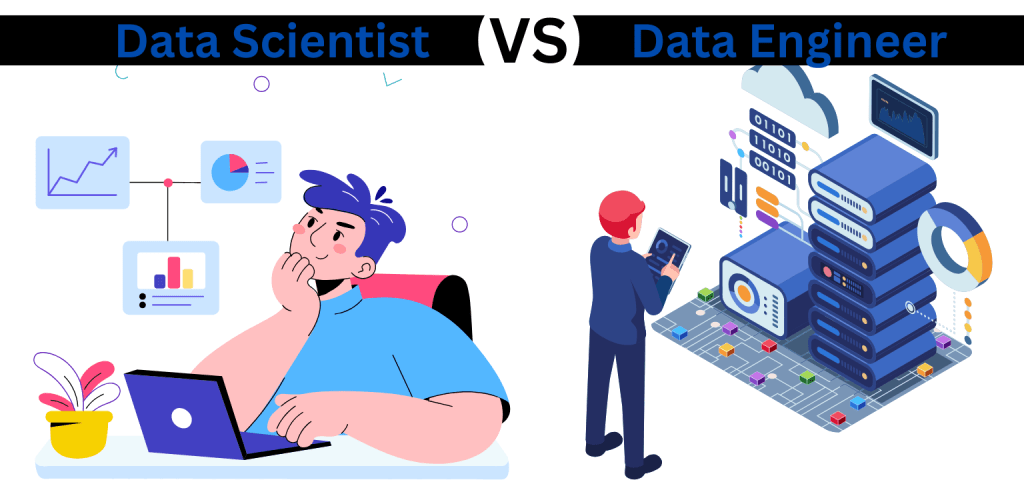You wouldn’t ask a Formula 1 driver to build the engine, and you wouldn’t ask the chief mechanic to win the race. In data, the same rule holds. To win, you need strong engineering and sharp strategy working together.

This post will clearly break down the two most important roles in data. We’ll explain who does what, the tools they use, how career paths develop, why the jobs stay separate, and how AI is already reshaping what each role does day to day.
Data engineers are the builders. They create the highways, factories, and refineries that move raw data into a clean and structured form. Without them, there’s no material for data science or analytics to even begin.
Their mission is simple but demanding: design, build, and maintain large-scale data infrastructure so the organization always has a steady stream of high-quality, reliable data to work with.
At a high level, data engineers focus on making sure data flows smoothly and is trustworthy. Their day-to-day often involves:
Engineers rely on a mix of programming languages, frameworks, and infrastructure tools to keep data systems running at scale.
Data scientists are the investigators and strategists of the data world. They take the refined material produced by engineers and turn it into insights that shape business moves, product direction, and long-term planning.
Their mission is to dig into prepared data, design predictive models, and pull out meaningful findings that directly address business questions while guiding future strategy.
Data scientists spend their time searching for patterns, testing ideas, and turning numbers into stories leaders can act on. Their responsibilities usually include:
The role blends programming, statistics, and storytelling. Common tools include:
At first glance, it might seem efficient to merge data engineering and data science into a single position. But, in practice, splitting them creates stronger teams and better outcomes.
Both data engineers and data scientists can build long, rewarding careers. The early years often focus on hands-on work, but senior roles move toward shaping strategy, mentoring, and making high-impact technical choices.
Data engineering careers follow a progression that steadily moves from hands-on coding to large-scale architectural thinking. Growth in this track often means less time writing individual pipelines and more time designing frameworks others rely on.
Progression: Junior Data Engineer → Data Engineer → Senior or Lead Data Engineer → Data Architect or Staff Engineer
Focus at senior levels: Instead of just writing pipelines, senior engineers design the company’s entire data architecture. They decide on storage formats, set standards, and make technology choices that influence how every team uses data.
For data scientists, the career ladder expands from technical analysis to setting the bigger picture for business and research priorities.
With experience, the role shifts from answering questions to guiding which questions are worth asking in the first place.
Progression: Junior Data Scientist → Data Scientist → Senior Data Scientist → Principal Data Scientist or Research Scientist
Focus at senior levels: The emphasis shifts from building models to tackling the hardest business challenges. Senior scientists shape analytical strategy, define success metrics, and guide less-experienced colleagues while partnering closely with leadership.
It’s easy to confuse the two roles, but their focus, skill sets, and outputs are quite different. This quick comparison highlights where each role spends its energy.
| Aspect | Data Engineer | Data Scientist |
| Focus | Data infrastructure and flow | Data analysis and insights |
| Core question | “How can we efficiently get clean, reliable data” | “What valuable questions can this data answer” |
| Main skills | Software engineering, database design, ETL | Statistics, machine learning, business acumen |
| End product | A stable, scalable data pipeline or database | A predictive model, an insightful report, or a data-driven recommendation |

Artificial intelligence is reshaping data work, but not in the same way for every role. While it may reduce repetitive tasks for some, it will also increase demand for others who can build the systems powering AI.
AI tools are starting to handle routine steps like basic exploratory analysis and automated model tuning.
This shift allows scientists to focus on higher-value tasks such as framing the right problems, interpreting results in a business context, and addressing fairness and ethics in deployment. The role is becoming more strategic, with greater emphasis on judgment and communication.
The rise of AI and ML systems only increases the need for skilled engineers. Training and running models at scale requires more complex data infrastructure, faster pipelines, and stronger governance.
Engineers will be asked to design systems that keep up with streaming data, vector stores, and demanding compute jobs, making their work more critical than ever.

The best fit depends on your natural interests and how you like to solve problems. Both paths are rewarding but attract different personalities and strengths.
You enjoy building reliable systems, thrive on clean architecture, and take pride in code that scales. If performance, structure, and software principles excite you, engineering may be your path.
You’re curious, enjoy analyzing puzzles, and like applying statistics or modeling to real-world questions. If you get satisfaction from uncovering insights and telling clear stories with data, then data science might be your best fit.
Many analysts make the switch to engineering by building on their existing strengths and filling in technical gaps.
The data engineer builds the factory, while the data scientist works inside that factory to create insights. Both roles are essential, both are growing in demand, and both offer exciting challenges for the right type of thinker.
Whether you want to design the foundation or extract the value hidden within it, your path starts with mastering the right skills. Explore our Bootcamp Courses to see how we can help you launch a career in the data role that fits you best.